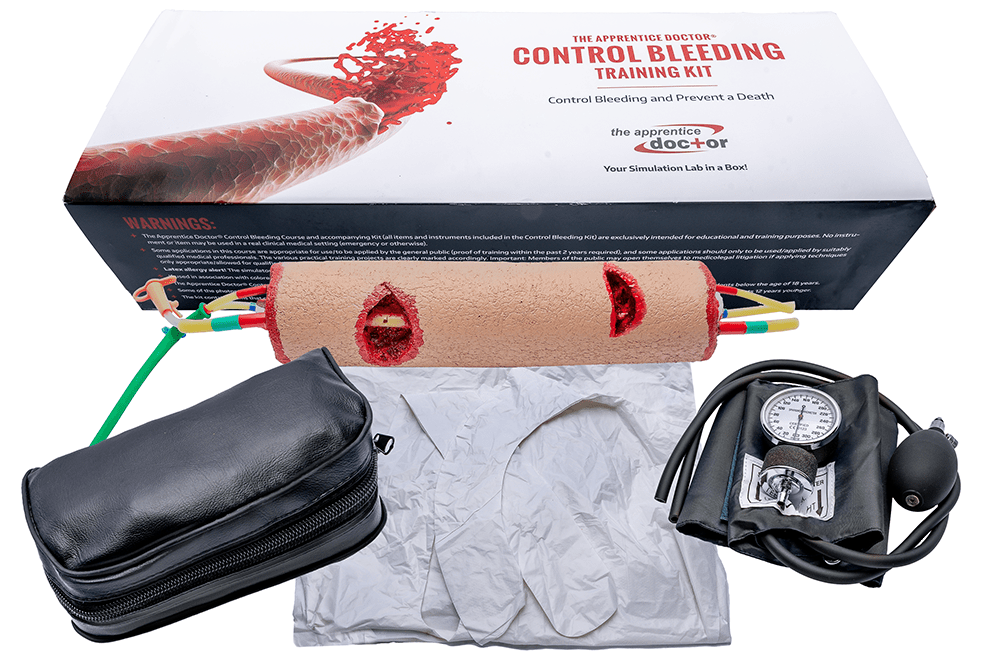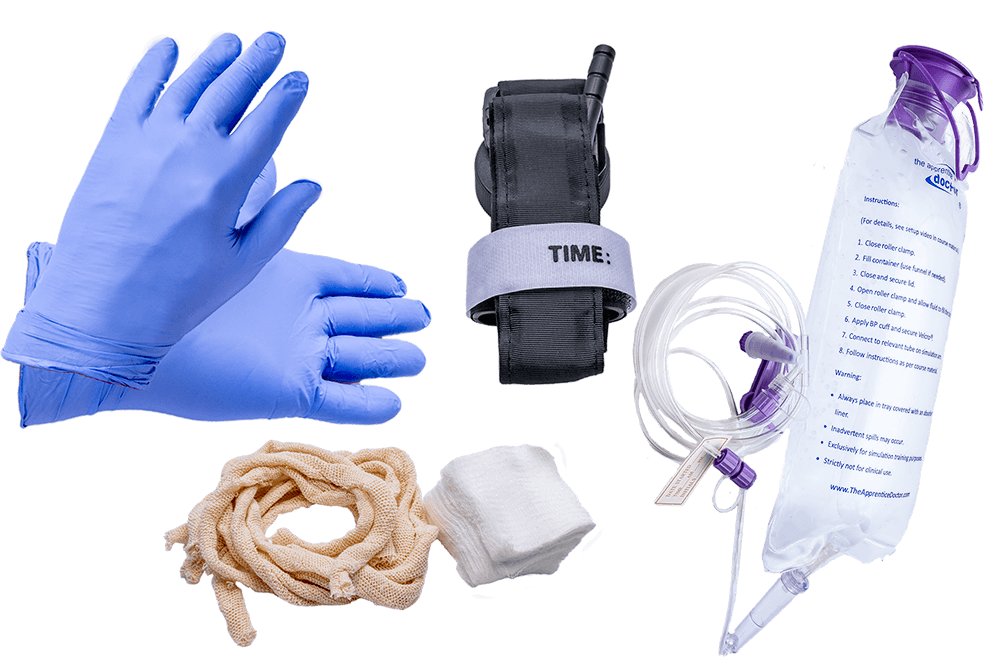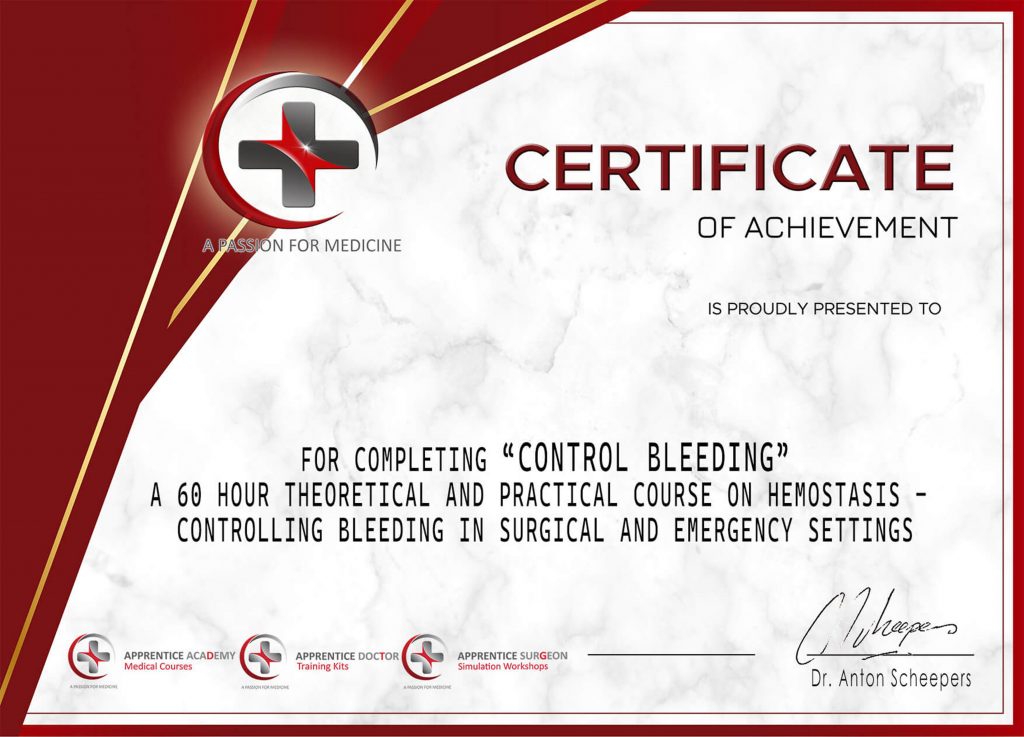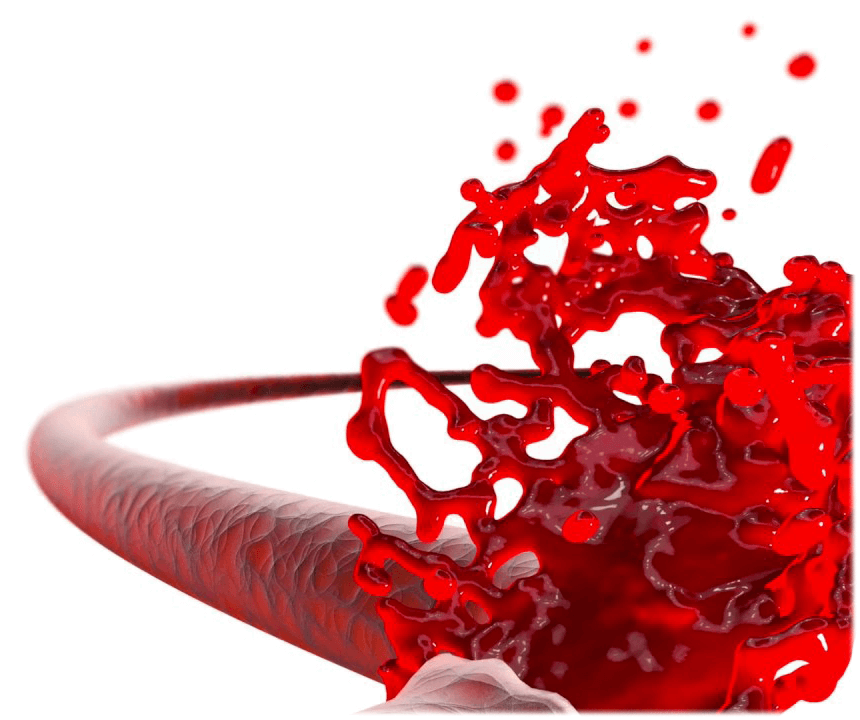This course aims to teach medical and healthcare professional students the basic principles of bleeding, hemostasis, shock, and how to control and/or stop bleeding in the emergency as well as in a medical environment.
The Kit


Click here to check out the Apprentice Doctor® Stop the Bleed Simulation Kit
The Course
The objectives of the Apprentice Doctor® Control Bleeding Course are:
– To give members of the public (without medical background/training) a good understanding of the different types of bleeding and then enable them to practice and perfect the relevant skills to stop or significantly reduce bleeding.
– To teach medical and healthcare professional students the basic principles of bleeding, hemostasis, shock, and how to control and/or stop bleeding in the emergency as well as in a medical environment.
You Get Instructional Videos That Teach You, Step-by-Step, the Various Ways to Stop Bleeding, Including All the Relevant Medical Theory
Control Bleeding Course students will gain knowledge and an understanding of:
– Vascular anatomy
– Physiology of blood, blood volume, blood pressure, and blood clotting
– Methods to control bleeding in both the emergency and controlled medical settings
– Surgical shock
– Restoring hypovolemia
– Relevant pharmacology
– Various other related subjects
Methods to stop bleeding in the emergency setting:
– Direct pressure
– Packing and bandaging
– Tourniquets
Methods to stop bleeding in the controlled medical environment:
– Direct pressure
– Packing and bandaging
– Tourniquets
– Clamping bleeding blood vessels
– Tying-off bleeding blood vessels
– A variety of other measures available to the medical professional
Target Audience
– High School Students who want to pursue a medical career
– Undergraduate students who wish to stand out by perfecting their skills ahead of time
– Pre-med students who want to improve their med-school application and perfect their skills ahead of time
– Medical School Students
– Qualified Medical Professionals who want a refresher course
– Members of the public who wish to gain the skills to save a life if/when an emergency or mass casualty event occurs
Difficulty Level
Intermediate
Duration
+-40 Hours (including practical projects).
The Apprentice Doctor Academy recommends that the student not rush through the course (not more than 3 hours per day) to allow for consolidation of the information. The course could be done in less than a week with full-time study; however, it is recommended that you not rush and instead allow the information to consolidate in your mind.
Please check your subscription details in your profile to see when your course access expires.
Furthermore we recommend that you briefly review the previous day’s work before continuing each day. This will also consolidate the knowledge in your mind.
Requirements/Instructions
– Register with Apprentice Doctor Academy
– Enroll in Course
– Simulation Kit (optional but recommended to complete the practical projects and practice the techniques you learn)
Certified Credits
Equivalent to twenty-five shadowing hours

Warnings
The Apprentice Doctor® Control Bleeding Course and accompanying Control Bleeding Simulation Kit (including all items and instruments in the kit) are exclusively intended for educational and training purposes. No instrument or item may be used in a real clinical medical setting (emergency or otherwise).
– Some applications in this course are appropriate for use/to be applied by the general public (proof of training within the past two years required), and some applications should only be used/applied by suitably qualified medical professionals. The various practical training projects are clearly marked accordingly.
– Members of the public and all people without a formal medical qualification may open themselves to medicolegal litigation if applying techniques only appropriate/allowed for qualified medical professionals.
– The simulator arm/leg simulation vein and artery tubes contain latex. We do supply latex-free simulator arms/legs as an alternative on request.
– If used in association with colored saline or fake blood—staining on surfaces and clothing may occur if not adequately protected.
– The Apprentice Doctor® Control Bleeding Kit is suitable for students over 15 years of age. Adult supervision is required for students below the age of 18 years.
– Some of the photos/videos in this course are not suitable for sensitive viewers. Parental guidance for students younger than 18 is recommended. Not suitable for students 15 years and younger.
– The kit contains items that could be a choking hazard in the hands of toddlers. Keep out of reach of toddlers and babies!

